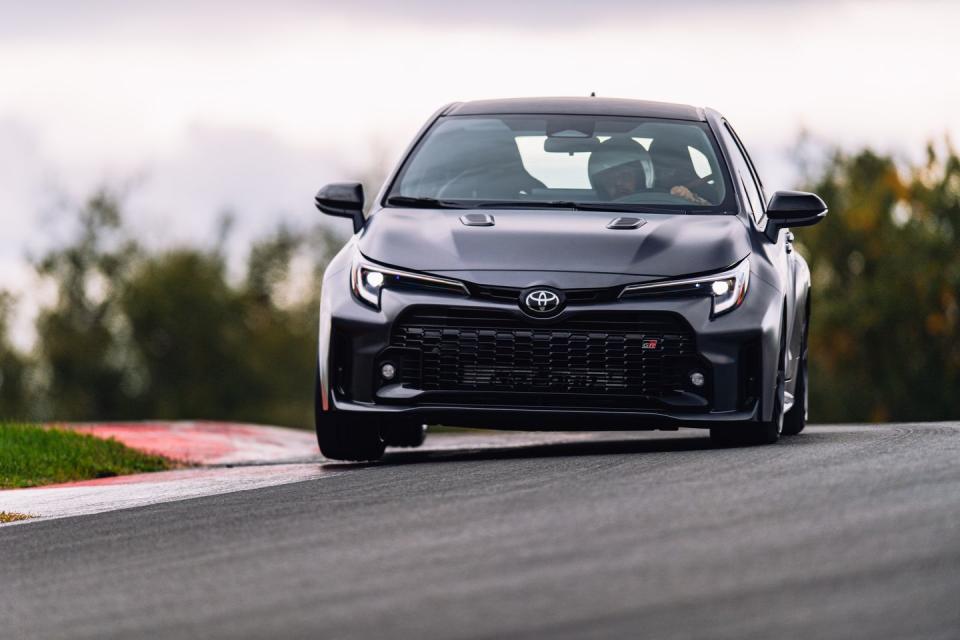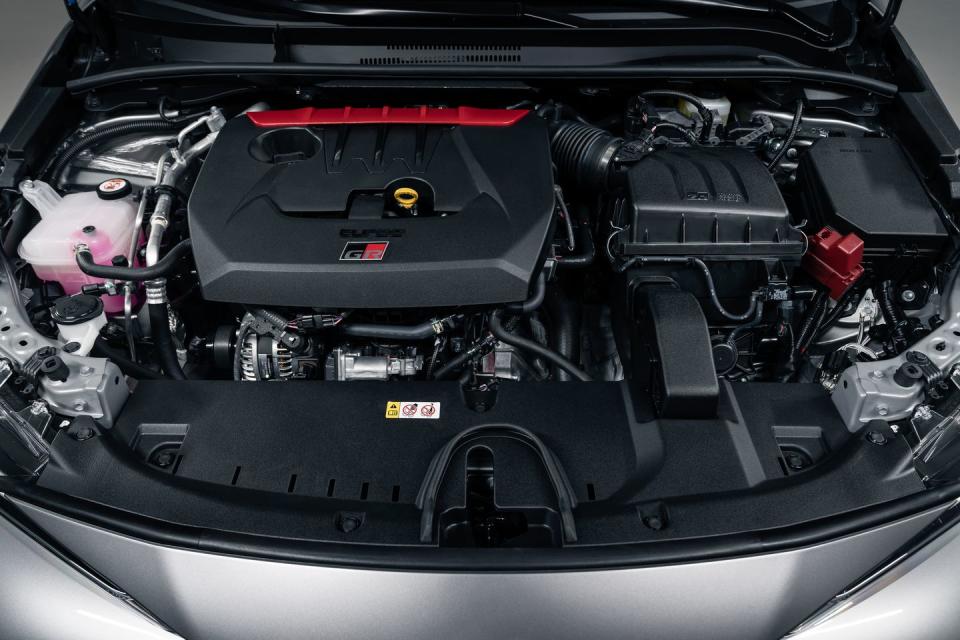More Cylinders Don't Always Mean More Power

If you're designing an engine for maximum horsepower, conventional wisdom suggests you want more revs, and typically, that means more cylinders. We don't drive around in one-cylinder cars, after all. More cylinders means many components of an engine's rotating assembly—pistons, rods, valves, camshafts, crankshaft, etc.—can be made lighter, reducing inertia, and allowing for higher engine speeds. For a given displacement, the very basic thinking is that you want as many cylinders as physically possible.
However, engine design doesn't happen in a vacuum. Very basic thinking doesn't apply. We also don't drive around in 20-cylinder cars. You have so much to consider in creating the ideal engine for a specific application, and that often leads you down a very interesting path. For the engineers at Toyota Gazoo racing, that led to a 1.6-liter turbo three-cylinder.
The three-cylinder is, of course, Toyota's G16E-GTS, which first debuted in the GR Yaris, and made it to America in the new GR Corolla. In the Corolla, the engine makes 300 hp and 273 lb-ft of torque and 295 lb-ft in the limited Morizo edition. "At first, this engine was developed for the Rally2 category," GR Corolla chief engineer Naoyuki Sakamoto tells Road & Track. "Our engineers were focused on how to maximize engine output to meet the homologation. So in that case, we tried to find out which engine rpm range is ideal for the Rally2, then figured out how to maximize performance."
Rally2 is one rung below the top-level Rally1 in FIA-sanctioned rally competition. Think LMP2 to Hypercar, to use a sports-prototype analogy. Like most racing formulas based on production cars, FIA Rally2 has engine design specifications. In this case, four-cylinders maximum, 1630 cc displacement, and a turbocharger with a 32 mm intake restrictor. A minimum weight of 2712 pounds and a maximum weight-to-power ratio of 9.2 pounds/hp means a maximum output of 290 hp. (Note that unlike modern sports-car racing, rally does not have Balance of Performance, where intake restrictors of various sizes and ballast are used to balance out the speed of various competing cars.)
While a basic understanding of engine-design theory might lead you down the path of using the most cylinders allowed, Toyota took a different path than any other Rally2 constructor. Sakamoto says that the idea was to maximize bore size, and fewer pistons for a given displacement means a larger bore with three cylinders is possible than with four cylinders.

Sakamoto explains that the larger bore also allowed for larger exhaust valves, which are especially important for Rally2 given the mandated intake restrictor. At its very core, an engine is an air pump, and the more air you get in and out, the more power you get. If your intake flow is limited, it's important to try and compensate with exhaust flow. Greater exhaust flow also helps spin up to the turbocharger more quickly, improving drivability.
Three-cylinder engines have another advantage over four-cylinders in that there's no exhaust-gas interference creating unwanted backpressure as there would be in a four-cylinder. Sakamoto says this meant Toyota didn't have to go down the route of using a complicated twin-scroll turbocharger to get desired power levels while also trying to mitigate backpressure. In the GR Corolla, the unique three-tailpipe exhaust system further reduces backpressure compared with the Yaris.
It's worth noting that Toyota is not the first to develop a rally three-cylinder. M-Sport, the de facto Ford works rally team, launched a 1.0-liter three-cylinder Fiesta for what is now called the Rally4 class back in 2018.


 Yahoo Autos
Yahoo Autos 